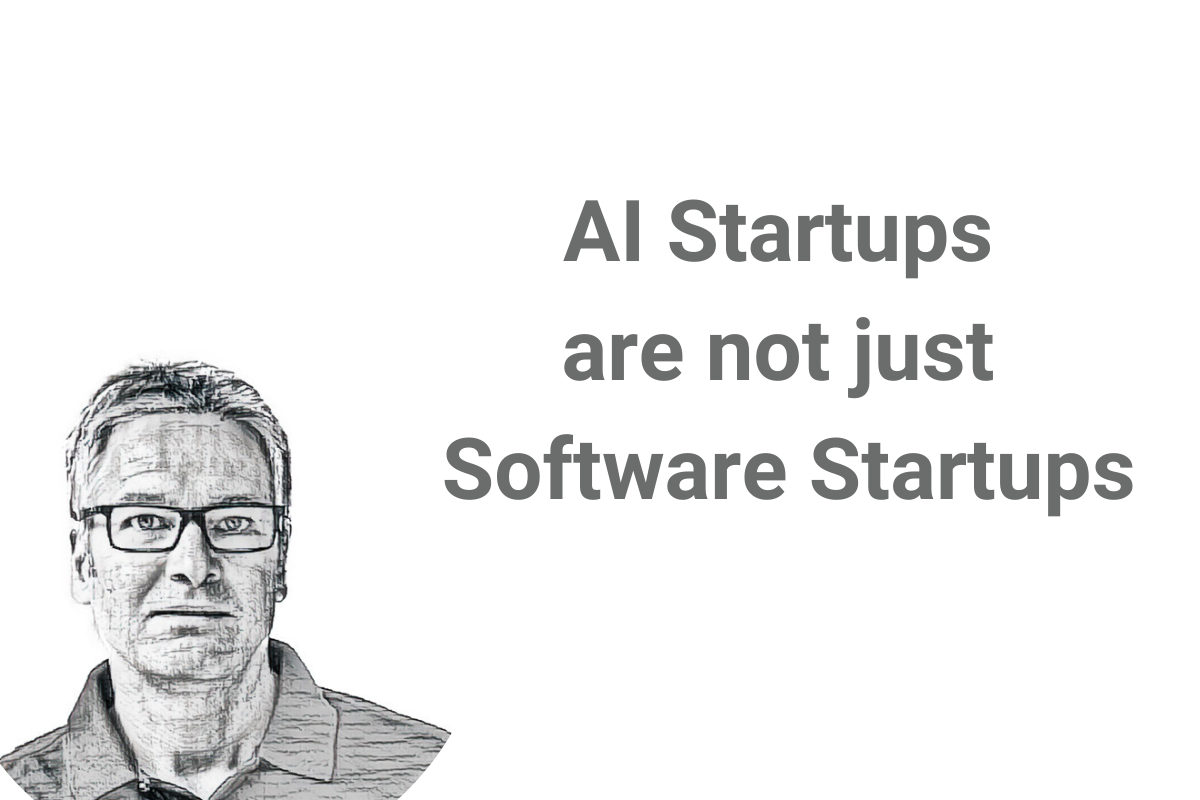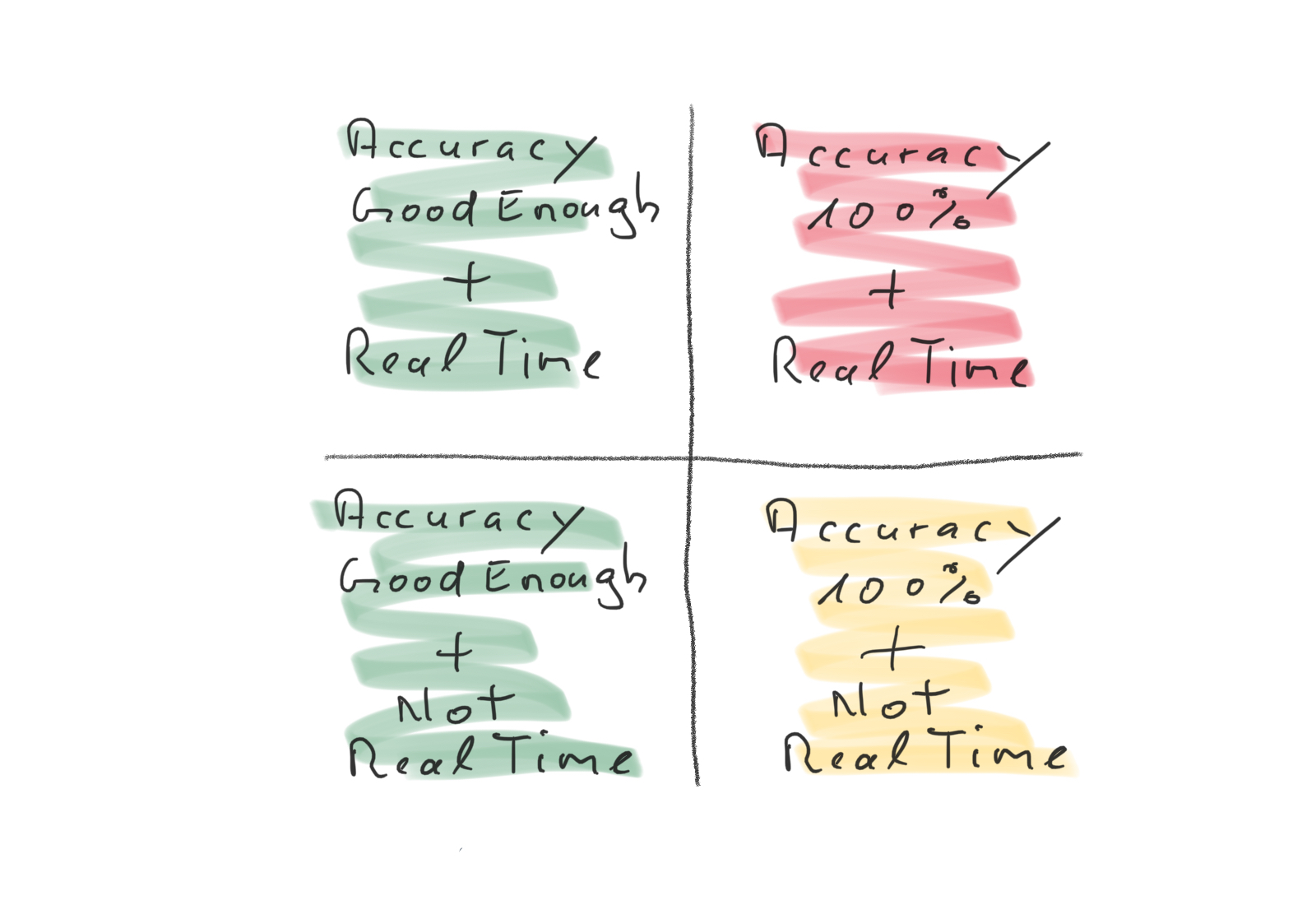
AI startups are not just software startups
We are living in the decade of Artificial Intelligence, which will redefine many industries and product categories. The foundations for the new (or new old) market leaders will be laid in these years. We need to understand the specifics of this technology and the associated business models to find the most promising applications – as founders, investors and business leaders.
AI Startups and not like other software startups
Most Artificial Intelligence (AI) startups will look similar to any other (software) startup in a few years. In fact, almost all companies will become AI companies (see my article “The decade of AI” [1] ). And those starting to use AI now have the best chance of success. AI means Machine Learning (ML) or Deep Learning (DL) in this context.
According to ARK Invest, deep learning will add US $30 trillion to the global equity market capitalization during the next 15-20 years. [2]
Today, AI startups are not like software startups. AI as a Service (AIaaS) is not the same as Software as a Service (SaaS).
Let’s look at the differences.
Developing AI solutions is different
Developing AI or better Machine Learning products and services is complex and requires a higher investment today compared to classic software products. This is mainly due to the necessary training of the AI algorithms.
Machine learning and Deep Learning are at the core of most AI solutions today. Basically these are prediction machines which have been trained with lots of data.
Classic example from computer vision: if the AI should learn to identify cats on a picture you need a) lots of pictures with and without cats and b) tell the algorithm if it is right or wrong. A human has to look at the pictures and annotate (or label) the ones with a cat. As you need thousands or tenth of thousands of examples (= labeled pictures) it is clear that training is time consuming. Quality data is hard to get and the prospects of success are difficult to assess at the start. Why? Because in the beginning it is not clear if the learning based on the available data will produce a result (= the algorithm) which can delivers the quality (= precision of the prediction) needed for the specific task. For the identification of cats on a picture 80% correct answers might be good enough. For self driving cars this would not work. 80% correct answers are easier (and cheaper) to achieve than 90%. And the last few % might be extremely difficult to achieve due to missing data (the so called long tail – one reason we don’t have autonomous cars driving around today).
Andreessen Horowitz (a16z) [3] summarized the challenges for AI startups as follows
- lower gross margins due to high training costs (more like 50%-60% compared to 60%-80% for SaaS companies)
- limited scalability due to (long tail) edge cases
- Difficulties to get the necessary data,
- challenges to protect their IP or to secure their own position
Another factor to consider is the cost of computing power. These are usually higher in AI startups than in classic startups. a16z calculates with up to 25% of the revenue that is necessary for cloud operations in AI startups. Costs are incurred in particular in the training phase.
GPT3 was developed by OpenAI with estimated compute costs of over 10M US$ (no official numbers available). In a recent article Bryan Catanzaro, VP of Applied Deep Learning Research at NVIDIA said that he thinks it is entirely possible that in five years a company could invest one billion dollars (!) in compute time to train a single language model. [4]
The operation of AI solutions can require greater computing power, too. And depending on the area of application, data management can become costly, especially when using images or videos.
How to address the challenges
To address these challenges, AI startups may combine software and services as a business model. For the development of the first product, an AI startups could pursue a partnership strategy where they develop much of the early product in close collaboration with a handful of (large) customers. The training of the AI models and the data needed for it are addressed at the customer site. These startups initially solve their customers’ problems with a lot of services rather than a lot of software. This results in higher personnel costs, which limit the profit margin at least in the early stages.
To summarize
- AI startups often combine software and services as a business model. This reduces the profit margin, but enables the successful development of solutions
- Training often involves high computational costs as well as the use of humans in training (annotation) – not only at the beginning of a project
How to select promising use cases
Another critical point where AI startups differ from other startups is the selection of promising use case for their products and services. The product-market fit is harder to define, as it is not clear at the beginning how quickly the necessary accuracy of the models can be achieved (remember: ML models are ultimately prediction machines). Edge cases (the long tail) have to be considered, which can be very expensive. These are cases which rarely occur and therefore very limited (or no) data is available. Critical questions to answer: When is a solution good enough to be attractive to users? Where is the cost limit? Is there enough data available to achieve the necessary accuracy? And so on
It is this uncertainty if and when the necessary accuracy of the models can be achieved that makes planning difficult. Often it takes more time = money. A classical business plan is therefore hard to create.
To better understand if a use case is a good fit for an AI solution today it helps to look at these parameters (in addition to the availability of data):
- how accurate does the prediction of the models have to be? Is 100% accuracy necessary (example : autonomous driving or accounting)
- How fast must the prediction be made? Is real time necessary (example: autonomous driving or chatbots)?

Source: Ingo Hoffmann
Use cases that need 100% accuracy are not yet feasible with ML. There it always needs the cooperation of machines and humans. Autonomous driving is a good example, but also areas like accounting, where there are clear legal requirements. Here, AI solutions can support humans (like autopilots today), but cannot replace them. Autonomous driving in particular also shows how complex the issue of edge cases can be (there are an infinite number of them here). And since autonomous driving also requires a real-time application (i.e., responses in the millisecond range), this area is not yet feasible today (and development is taking much longer than predicted).
In contrast to the areas where there is no need for 100% accuracy. This is where we can find most of today’s ML applications, where ML can play to its strengths and deliver significant value today.
One potential avenue for startups in these areas is to tackle highly scalable, low-complexity tasks where models can be used for many customers. For example, a semantic platform that can understand and process texts from different domains (and languages). But then you have to think carefully about how to offer a solution that is 10x better than existing alternatives. And how to stand out from the competition.
The solutions that will succeed are those that not only leverage massive amounts of data and the latest technology, but thereby give the end user “superpowers” that make them a “hero” in the company.
Satisfied customers = growing volumes of high-quality data = better models = more customer value = more satisfied customers.
Summary & Outlook
Today AI solutions and startups are facing specific challenges and therefore are (still) special. We need to understand this situation in order to make successful investments in AI – as business leaders, entrepreneurs and investors. But AI will continue to evolve rapidly over the next few years. Opportunities in Unsupervised Learning, Self-Supervised Learning or Federated Learning will make the development of ML solutions much easier in some areas. The availability of new and better algorithms will play an important role. So will the ability to run AI solutions on more and more devices (Edge AI). New hardware will significantly speed up the training and application of ML. To give a few examples.
Like all foundational technologies, AI and machine learning will evolve. From a novelty to mainstream, it will become invisible as an indispensable component in 10 years. Like electricity or databases before – only faster.
And then there will be no more AI startups, only startups and companies that will all use AI.
[1]: The decade of Artificial Intelligence – Ingo Hoffmann
https://ingo-hoffmann.com/the-decade-of-artificial-intelligence/
[2]: ARK Invest – Big Ideas 2021 :
https://ark-invest.com/big-ideas-2021/
[3]: a16z : The New Business of AI (and How It’s Different From Traditional Software)
https://a16z.com/2020/02/16/the-new-business-of-ai-and-how-its-different-from-traditional-software/
[4]: The next platform: The Billion dollar AI problem that just keeps scaling
https://www.nextplatform.com/2021/02/11/the-billion-dollar-ai-problem-that-just-keeps-scaling/




